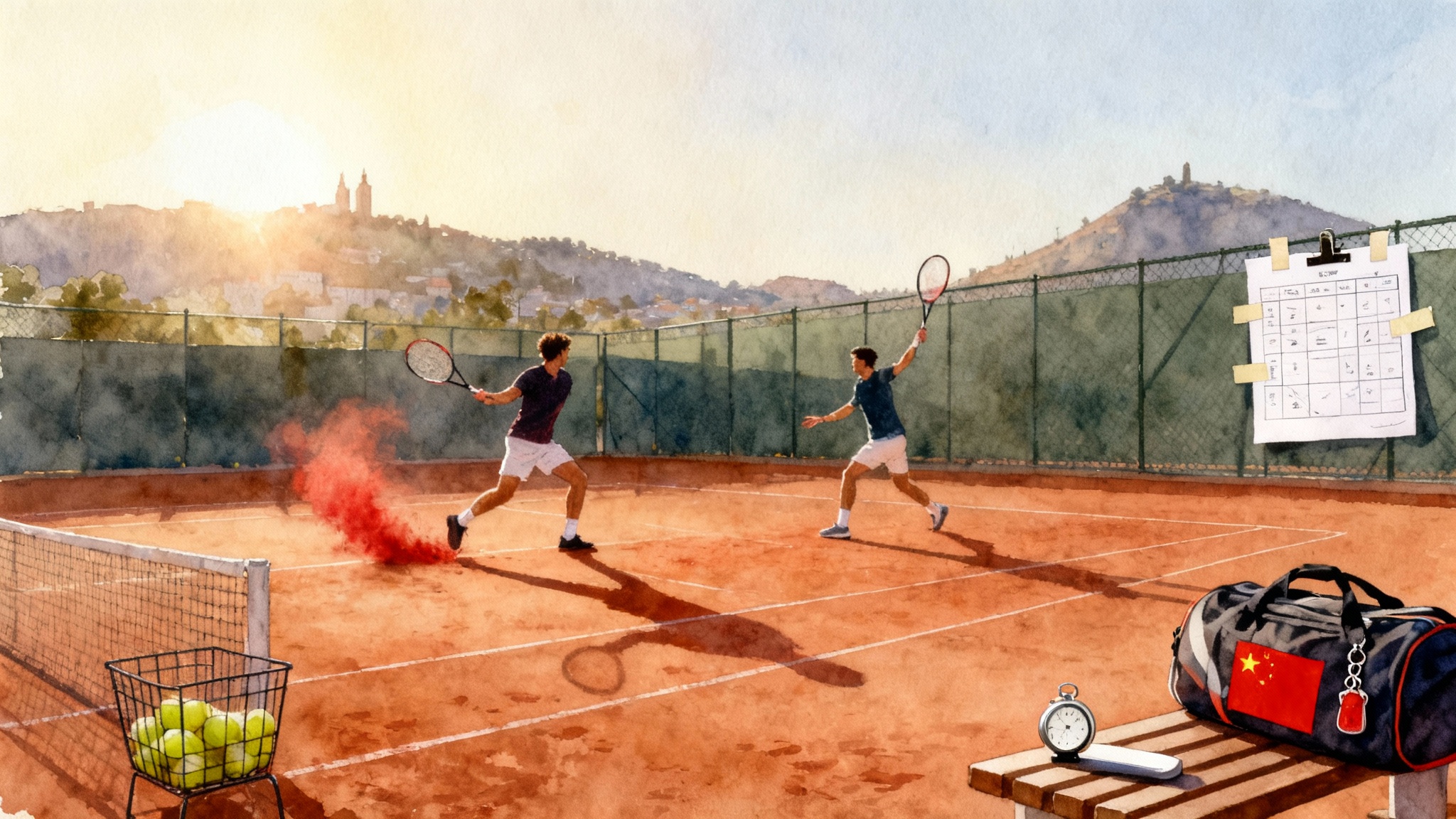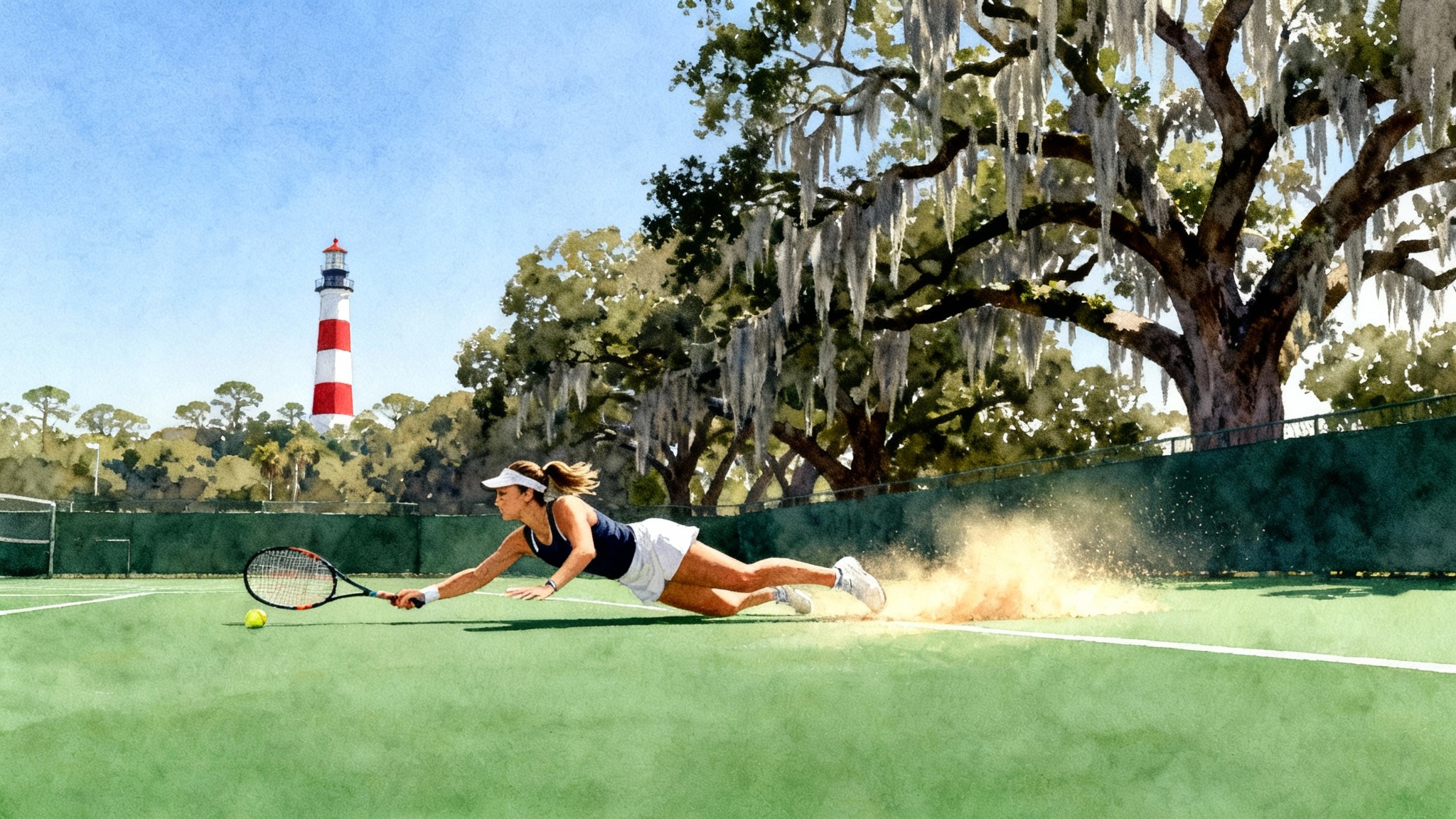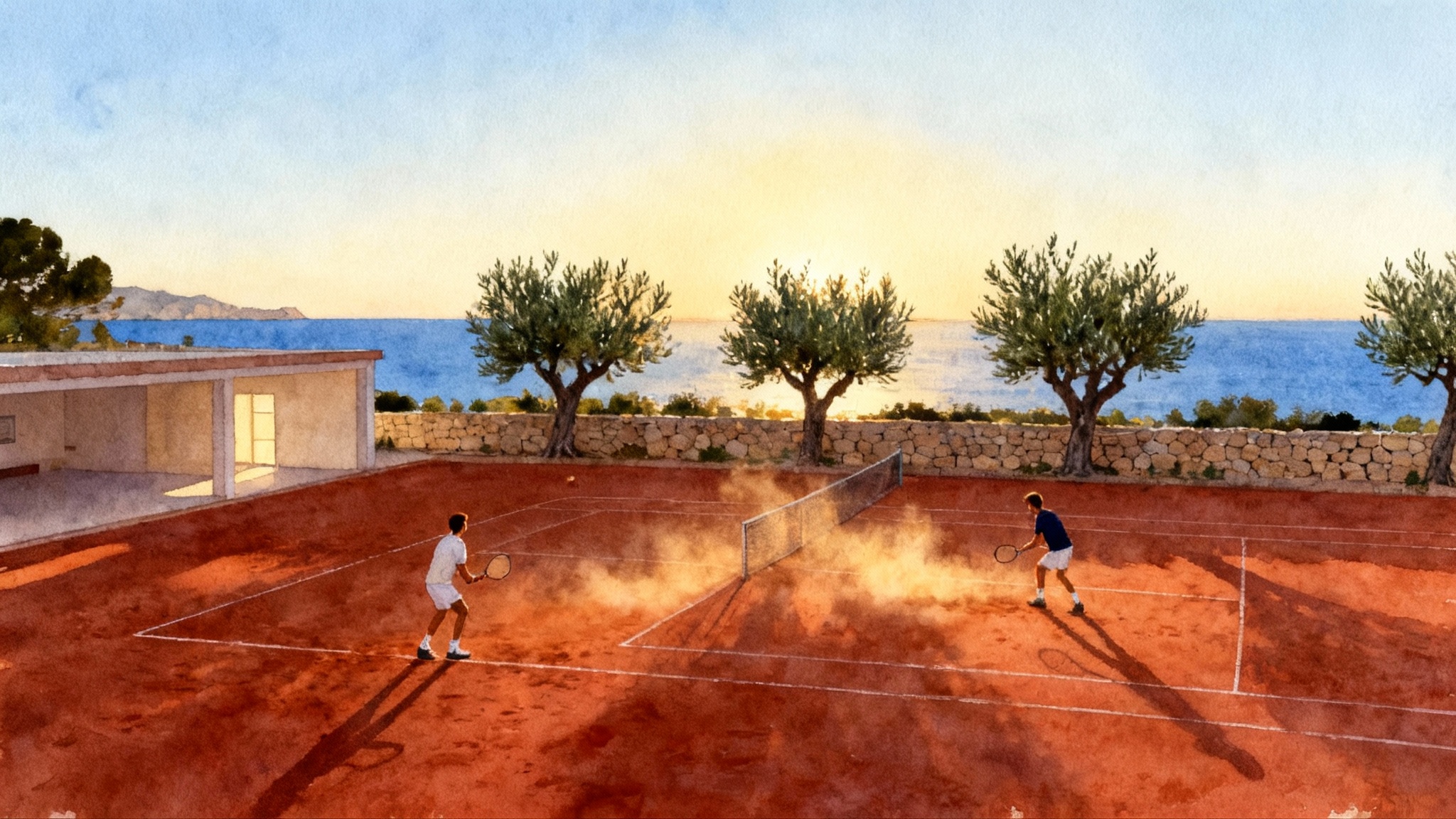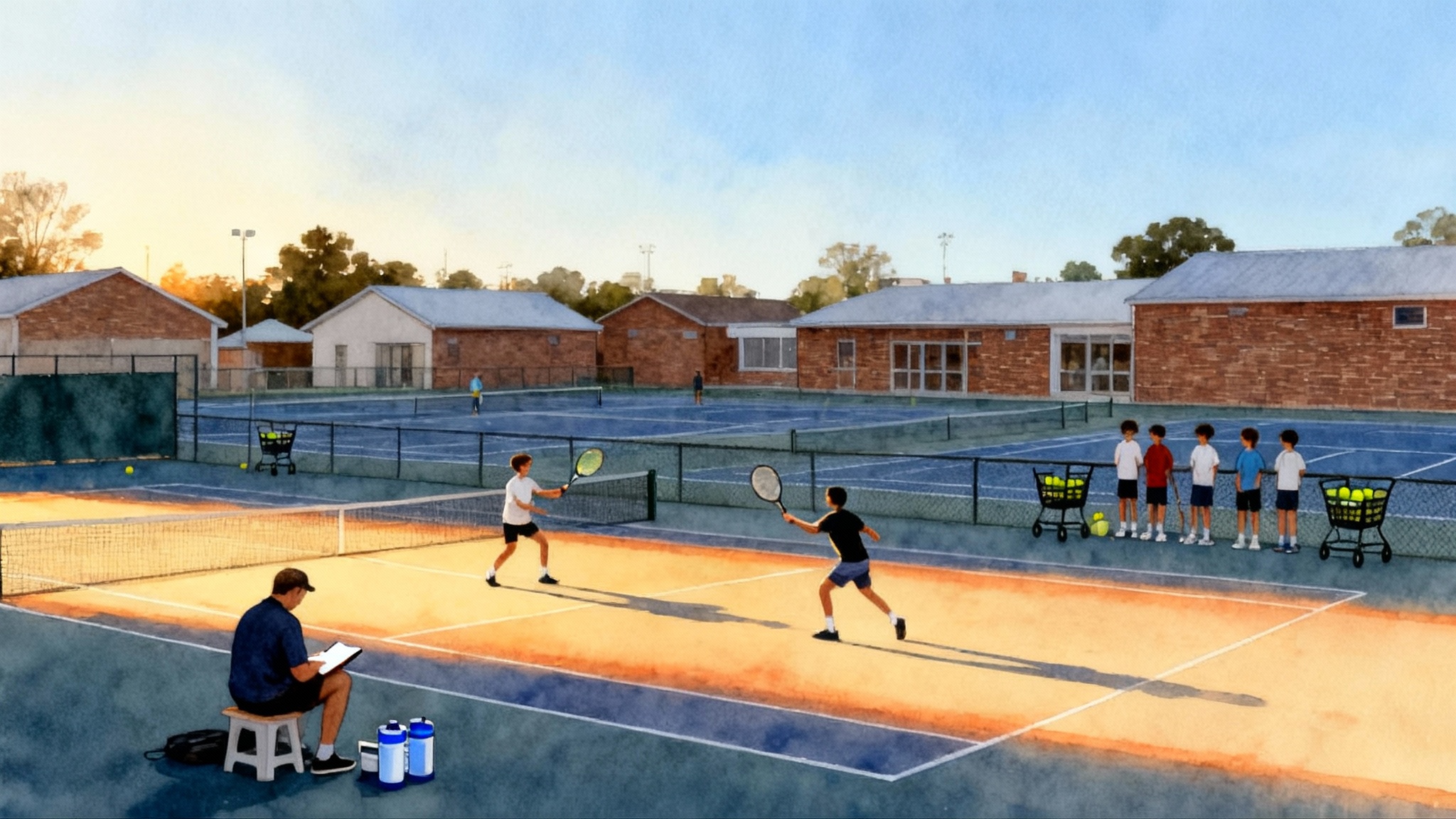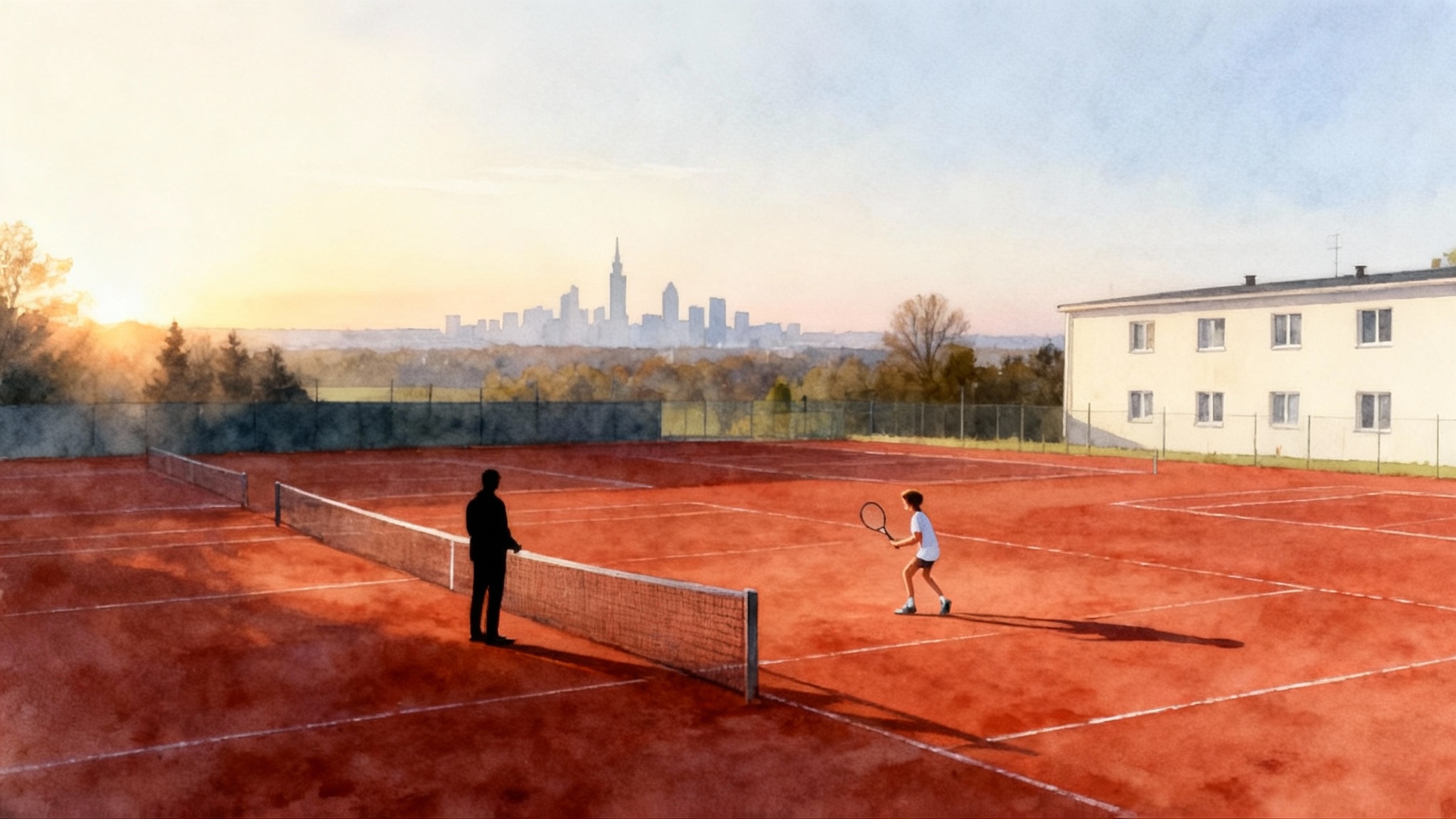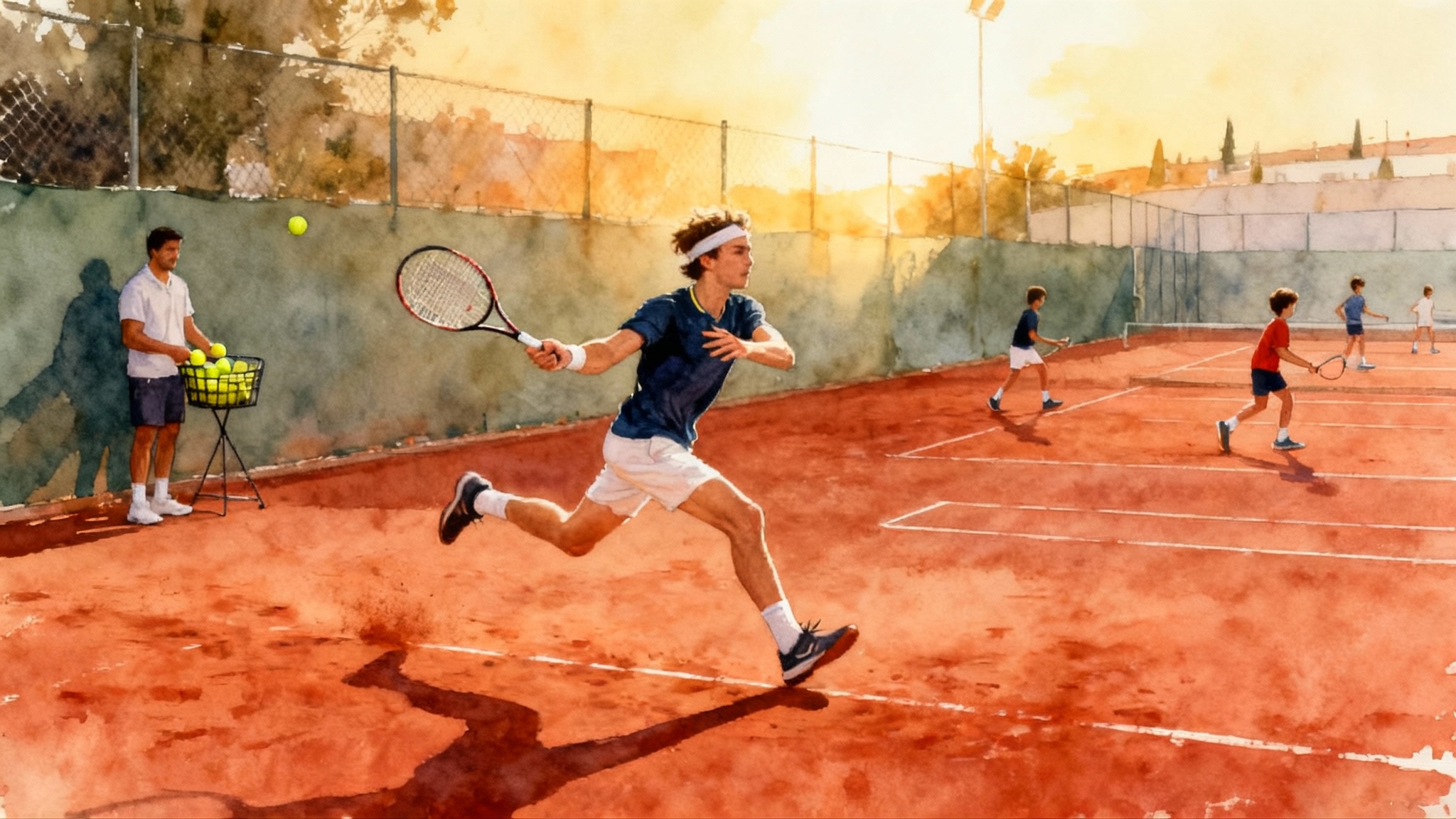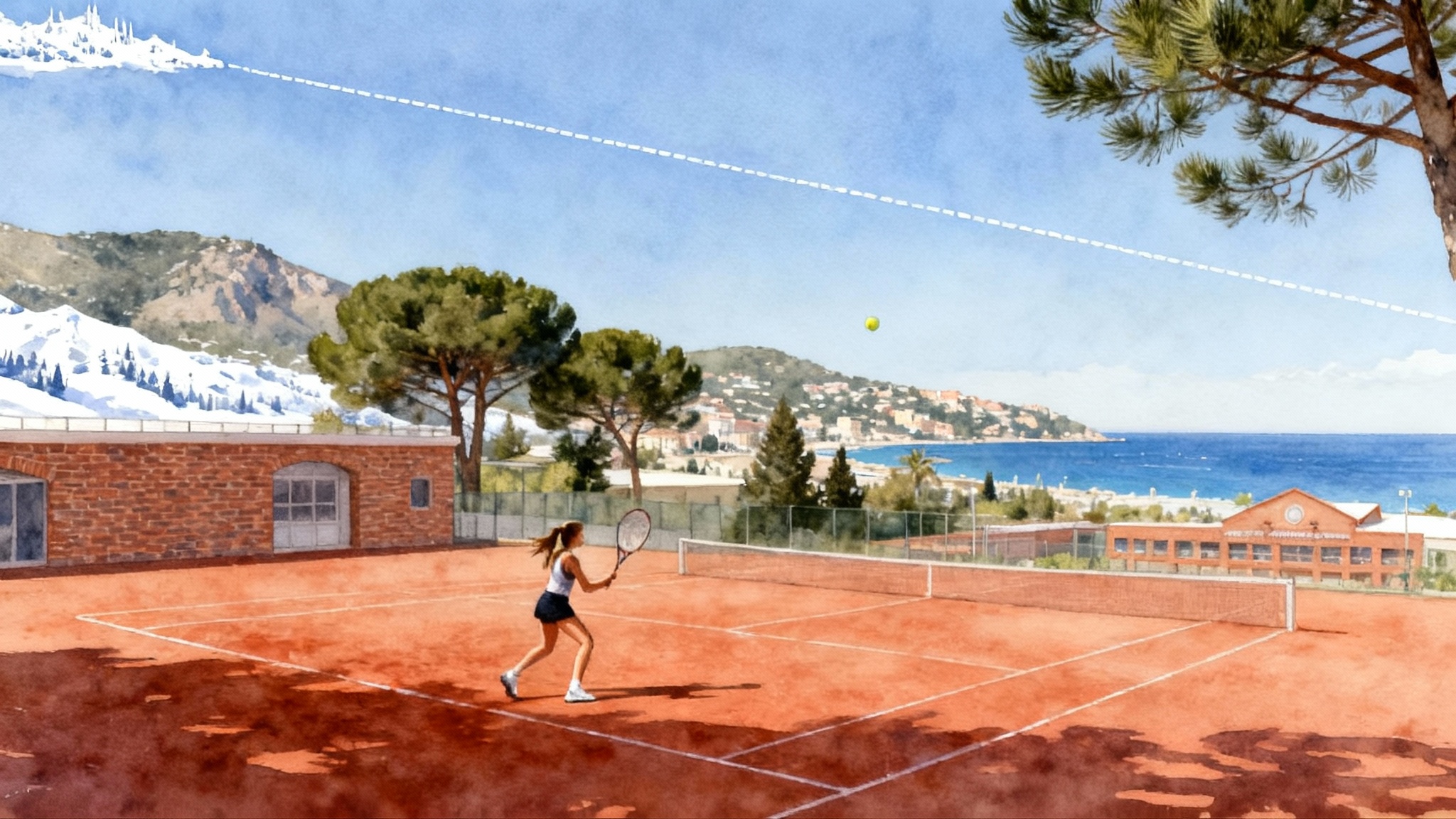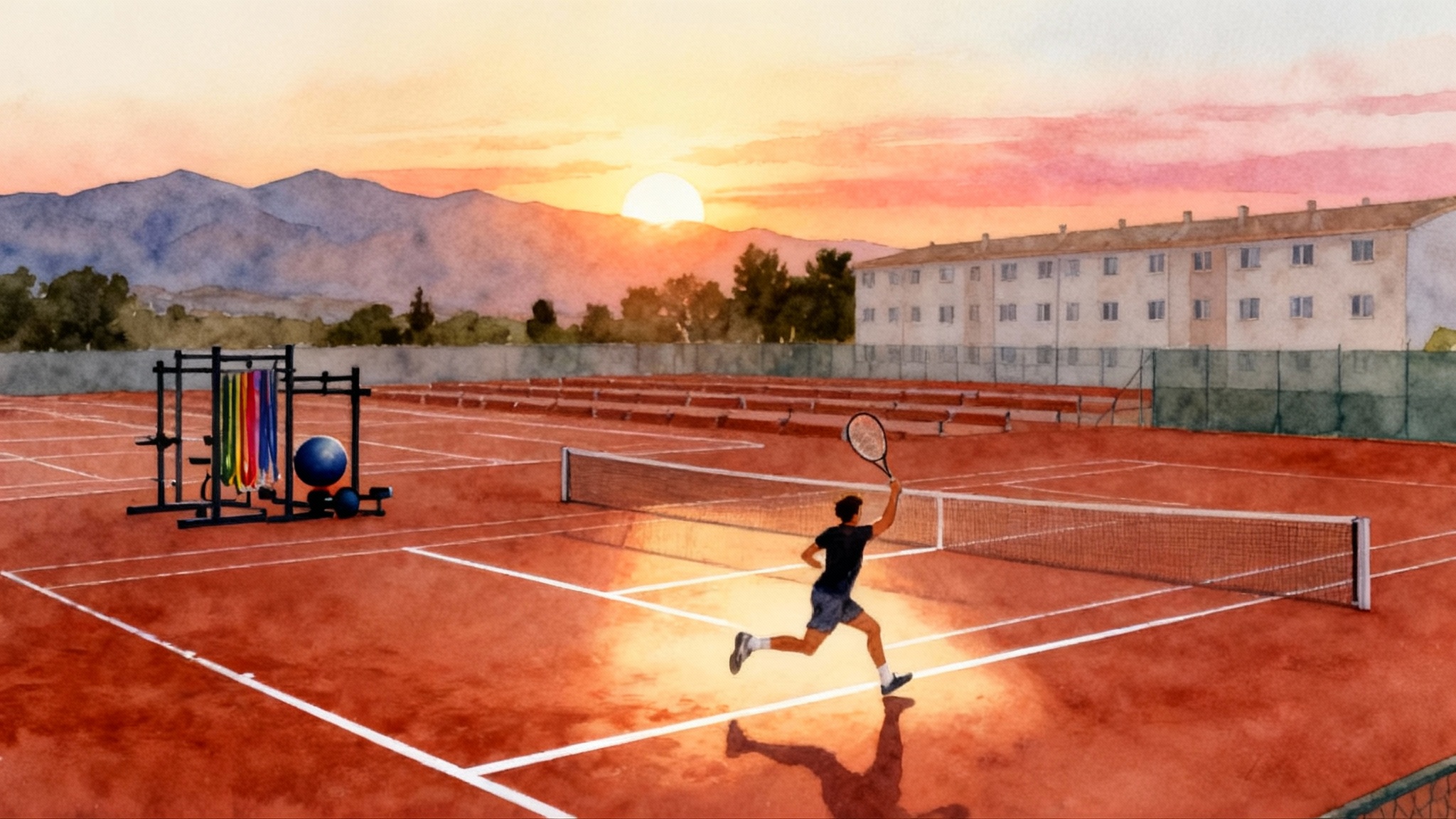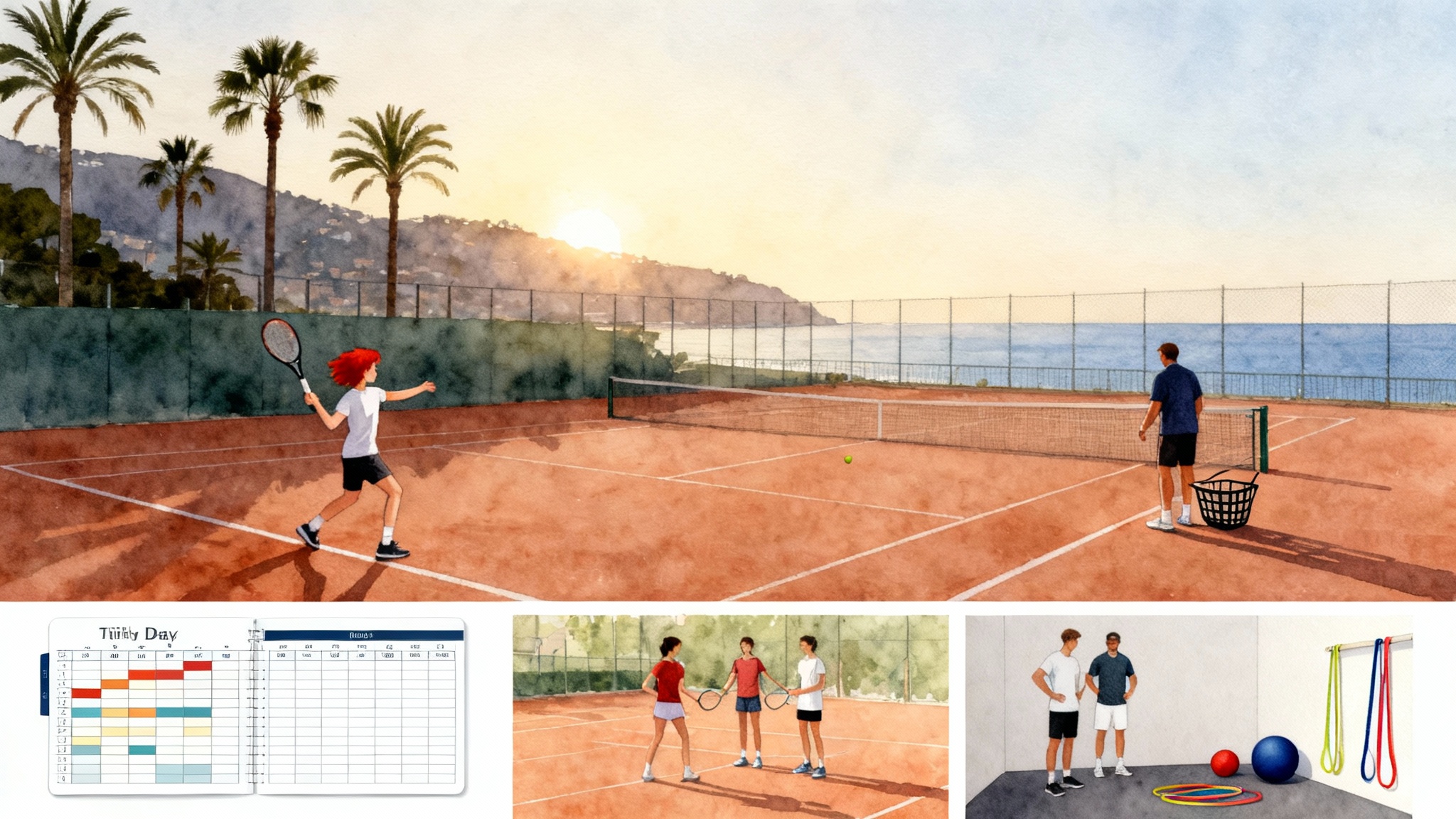Coco Gauff’s Hybrid Path: Florida Roots to Mouratoglou
How Coco Gauff blended a Florida home base with concentrated training blocks at the Mouratoglou Academy in France. We unpack how clay, small-group drilling, U.S. match density, early doubles, and a 2023 coaching reset shaped a Grand Slam game.
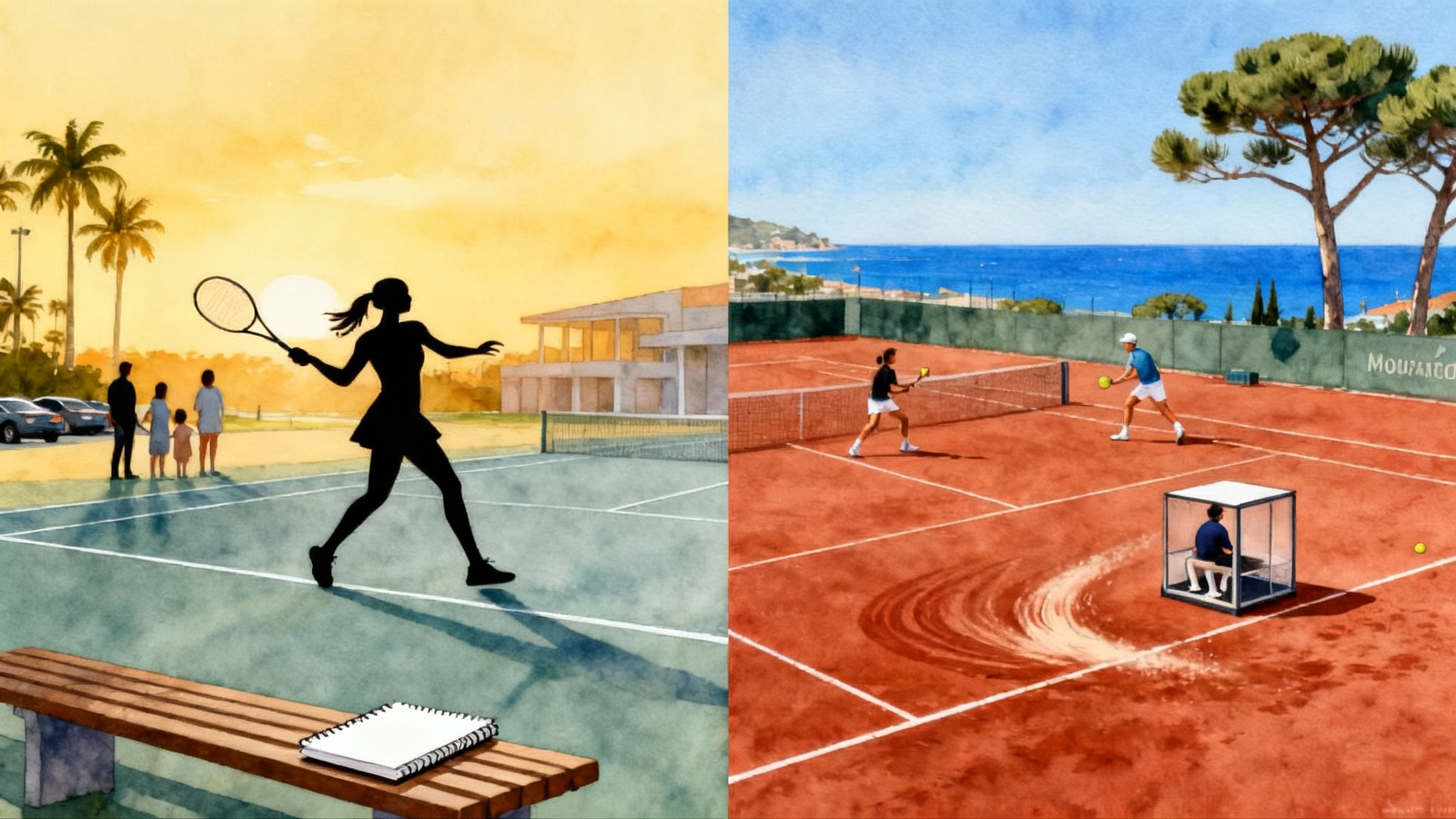
The hybrid pathway that built a champion
Coco Gauff did not grow up in a dorm, clocking identical days inside a single academy bubble. Her family built a Florida home base for school, support, and steady match play, then layered on targeted overseas blocks at the Mouratoglou Academy on the French Riviera. As a junior, she was identified by Patrick Mouratoglou and spent periodic stints on the academy’s clay, a setting that tightened her technique and expanded her tactical options. Those blocks were not a lifestyle; they were calibration sessions with a defined goal and an end date. The result was a player who could move like a clay courter, compete like an American hard court hitter, and make decisions like a veteran.
For families weighing academy life, Gauff’s route offers a third option between full-time boarding and staying home. It is a recipe built on two anchors: a stable daily environment in Florida and short, high-intensity training immersions in Europe. The hybrid is not a compromise. It is a strategy.
Florida roots: the stable platform that scaled
Gauff’s home base in Florida did the heavy lifting. There were familiar courts, school rhythms, and trusted voices. Regular U.S. competition meant she could find quality match play without crossing an ocean. The United States junior calendar is dense. That density lets a developing player stack competitive reps without gambling the entire season on a few trips. A similar stateside engine powered Frances Tiafoe’s JTCC pathway.
At home, Gauff could do three things well:
- Maintain consistent fundamentals. Daily hitting with a parent coach or a small local team removes the churn of constantly changing cues. That consistency matters for stroke timing and confidence.
- Play frequent matches with low travel cost. Local and regional events in Florida, plus USTA match-play days in Orlando, created a pipeline of competitive touches. A teenager does not need a Grand Slam draw to feel pressure. Two third-set tiebreaks on a Saturday do the job.
- Test changes quickly. Make a technical tweak in the morning, then go try it that afternoon in real points. The feedback loop gets short, which accelerates learning.
France blocks: Mouratoglou’s tight pods and clay
When the Gauffs flew to France, the goals were specific. At the Mouratoglou Academy in Biot, sessions often run in small ratios with clear themes and measurable outcomes. The staff knows how to build focus blocks that hammer one or two constraints and let everything else ride. Coco’s link to the academy is well documented, including her early selection to the Champ’Seed program and regular returns to prepare on red clay. See the academy’s own profile for how those touchpoints unfolded: Gauff’s link with Mouratoglou. Clay-first habits echo what the Spanish model refined in other cases, such as Alcaraz’s JC Ferrero Academy path.
What do those blocks look like in practice?
- Small-group drilling that limits decision branches. Example: ad-court crosscourt forehand live feed with a constraint to hit a window two meters inside the sideline, then one free ball to finish. Repeat at high ball counts. The aim is to clean contact and build a default pattern under pressure.
- Clay-specific footwork. Coaches cue load outside leg, recover on a shallow C to reinforce balanced sliding and shorter recoveries. Players learn to arrive to contact with a quiet head and a moving base.
- Situational patterns. For a right-hander, the red clay teaches forehand inside out as a rally starter instead of a winner swing. The shot becomes a probe to pull errors or to earn a shorter backhand reply you can punish.
Clay lowers ball speed and raises decision density. That exposes any clutter in a teenager’s technique. On hard courts you can sometimes blast past your problems. On clay, poor spacing and late preparation leak points every game. Fix those in France, then go home and cash the gains.
How clay reshaped Gauff’s movement and forehand options
Coco’s speed has always been elite, but clay honed the efficiency of her first step and the quality of her stops. Think of movement as braking, not just acceleration. On red dirt, if your last two steps are noisy, you float past the ball and leave the contact behind your hips. Repetition on clay teaches soft stops, earlier unit turns, and cleaner lines back to base.
On the forehand, the big change was not magic. It was repetition with smarter rules.
- Contact height: Instead of reaching below the hip and flipping up late, the work emphasized taking the ball from hip to shoulder height with a stable wrist, which raises net clearance.
- Tempo: Fewer full rips, more heavy rollers to big targets. Two heavy crosscourts, then attack the middle third to open either side. When the pattern is set, step around for the inside out or hit the inside in to surprise.
- Decision rules: One early cue was simple. If pulled wide to the ad side, go back crosscourt 80 percent of the time. Save the line for a ball you can meet in front.
The effect is visible in long rallies. She can now buy time with a higher, heavier forehand when needed, instead of forcing a low-percentage laser. That option alone changes the math of a three-set match.
The U.S. match-play engine: high density, real pressure
The Florida base unlocked a crucial edge: volume of meaningful points. In the United States, a motivated junior can play back-to-back matches most weekends and find a wide range of styles. That variety builds tactical tolerance. You have to solve a lefty topspinner at 10 a.m. and a flat hitter at 2 p.m. The problem-solving skill transfers directly to the tour.
Gauff’s camp did three simple things to squeeze value from that density:
- Capped the number of events per month to avoid emotional burnout, often two competition weekends and two training weekends.
- Used match-play days like scrimmages with a theme. For example, a day where every deuce point must start with a second serve. Or a day where approach shots are mandatory on any short ball.
- Kept a scoreboard for patterns, not just wins. Track how many forehand crosscourt exchanges reach six balls or more. If that number rises, the forehand is holding up under fire.
Key decisions that changed the arc
1) Periodic overseas blocks instead of full-time boarding
Why it mattered: The family kept control of the environment. A home base protected sleep, school, and social anchors. Overseas trips were purposeful, not open ended.
Mechanism: Block training lets you periodize. Two to four weeks in France to sharpen a theme, then six to eight weeks at home to reinforce it in matches. The gains stick because you test them immediately.
Implication for families: Full-time boarding is not the only path. If your player thrives on routine, consider targeted academy blocks during school breaks or after a growth spurt when timing wobbles.
2) Embracing doubles early
Why it mattered: Doubles accelerates three undertrained skills in juniors. Return variety, transition footwork, and volley competence. Gauff’s early devotion to doubles made her first step forward automatic and improved her backhand return choices under pace.
Mechanism: Doubles packs more first-strike sequences into less time. You rack up hundreds of returns, split steps, and first volleys in a weekend. That density is hard to match in singles-only schedules.
Implication for families: Add at least one doubles block per month in the 12 to 16 window. Pick a partner who complements your player’s patterns. If your player is a forehand-dominant baseliner, pair with a net-forward partner who calls poaches and forces adjustments.
3) The 2023 coaching reset
After a rough Wimbledon in July 2023, Gauff reorganized her team, adding veteran coach Brad Gilbert and working in tandem with Pere Riba during the summer hard court swing. The on-court shifts were practical. Tighter return position against second serves. A return to simpler forehand targets. More willingness to play two crosscourts before changing direction. The results came fast. She won in Washington, then Cincinnati, then her first Grand Slam title at the US Open with a comeback win in the final. The USTA’s event coverage captures that run with dates, opponents, and context: Gauff’s US Open coronation.
Mechanism: Experienced voices created clarity under stress. Gilbert is known for pattern discipline and percentage tennis. Those ideas meshed with the movement base Gauff had built on clay.
Implication for families: A reset is not a referendum on the past. It is a test of fit. When results or confidence dip, try a three-month consultancy with a specialist coach while keeping the home staff in place. Measure by leading indicators like break percentage or holding serve after 30–30, not just wins.
What families can copy, step by step
Here are concrete decisions you can make without guessing.
When to add an academy block
Add a two to four week block if any of these show up for more than a month:
- Spacing errors on one wing despite normal fitness, suggesting timing drift
- A tendency to overhit on big points because there is no trusted rally pattern
- Fatigue in third sets that looks more mental than physical
- A growth spurt that made the old swing path unreliable
How to run the block:
- Pre-define two themes. For instance, forehand crosscourt height control and second-serve return position.
- Keep the ratio small. Target pods of two or three players, or one-on-one sessions two days per week.
- Build a testing day every fourth day with match play that forces those themes. If the theme is return position, start every game at 30–30 and alternate serve and receive.
- End with a written handoff. Bring home two drills and one key cue per theme to continue for six weeks.
How to structure match-play volume
- Ages 10 to 12: One match-play half day per week, one tournament weekend per month. Focus on serve plus one patterns and footwork games.
- Ages 13 to 15: Two match-play days per week, two tournament weekends per month in season. Use themed scrimmages. Record third-set performance and break-point conversion, not just results.
- Ages 16 to 18: Periodize by six-week blocks. Four weeks build with one tournament. Week five play a higher level event. Week six recover and review. Add doubles at least once a month year round.
What to track every match:
- First serve in, plus hold percentage after landing the first serve
- Return depth on second serves, measured by how often the return lands past the service line
- Forehand rally length to six balls crosscourt at least three times per set
- Transition attempts per set, whether successful or not
How to layer specialists without losing your home base
- Pick a single technical lead. One person owns the stroke model. Visiting specialists suggest, the lead decides.
- Strength and conditioning twice per week in season, three times out of season. Prioritize ankle mobility, single-leg strength, and deceleration. Tennis is braking.
- A movement specialist once per block to tune the split step, the first crossover, and the stop. Video from behind on clay and hard.
- Sports psychology as a standing appointment, not a crisis call. One session every two weeks focused on between-point routines and score-based triggers.
- Quarterly huddles. The home coach, the academy coach, the fitness lead, and the family meet for 30 minutes on video to align drills and language.
Choosing a block: Mouratoglou vs Rafa Nadal Academy
Every academy markets well. Choose by fit and method.
- Mouratoglou Academy, Biot, France: Known for small-ratio drilling, data-aware session design, and access to high-level sparring. Surfaces include clay and hard. Strong for players who need to clean a specific pattern, rebuild confidence on clay, or sharpen decision rules.
- Rafa Nadal Academy, Mallorca, Spain: Known for Spanish volume, live-ball intensity, and heavy crosscourt foundations. Great for building rally tolerance, footwork stamina, and the forehand as a court-opening shot. For a case study on that approach, see how the Nadal Academy shaped Casper Ruud.
You do not need to pick one forever. Many families will choose one academy for a spring clay primer and another for a summer hard court push. Define the job to be done, then book the block that does that job best.
A 12-week sample plan inspired by the Gauff model
Below is a blueprint you can adapt to age and level.
-
Weeks 1 to 4, Florida home base
- Theme: forehand height control and second-serve return
- Work: three hitting days, one movement and strength day, one match-play day
- Measurement: forehand crosscourt rally to six balls, return landing depth beyond service line
-
Weeks 5 to 6, academy block in Europe
- Ratio: two to three players per coach most days, one private session per week
- Surface: clay first week, hard second week
- Constraints: ad-court crosscourt forehand with target zone, required recovery pattern after every wide ball, return position experiments against lefty and righty serves
- Testing: match day every fourth day with themes embedded in scoring
-
Weeks 7 to 12, back home and racing
- Enter two events, two rest-and-review weeks, and two training weeks
- Keep one doubles weekend to accelerate net skills and returns
- Maintain a single-page cue sheet from the academy block taped in the bag
What success looks like by week 12:
- Fewer rushed forehands at shoulder height
- More second-serve returns landing past the service line
- Higher break percentage without a change in raw power
- More confident pattern tolerance in rallies of six balls or more
Common pitfalls and how to avoid them
- Going too long overseas. After three to four weeks in a new environment, learning efficiency drops. Plan short, punchy blocks and come home to test.
- Changing too many things at once. One movement cue plus one ball-flight cue per stroke is plenty. Write them down.
- Treating doubles as filler. Use it as a development lever. Set goals for poaches, return targets, and first volley depth.
- Measuring only wins. Track the leading indicators that predict wins: break percentage, rally tolerance on the weaker wing, and first-serve hold rate.
The big takeaway
Coco Gauff’s rise was not an accident or a single bet on an academy. It was a planned collaboration between a stable Florida base and targeted blocks at a European academy renowned for its clay and its small-group focus. The clay sharpened her movement and gave her forehand more ways to win points. The U.S. calendar supplied match density to pressure test those gains. Doubles made her returns and transitions automatic. And when the time came, a 2023 coaching reset aligned her habits with a simpler, higher-percentage plan, and that alignment paid off with a first major at the US Open.
For families, the action steps are clear. Keep a stable home base. Add overseas blocks with specific themes. Use doubles intentionally. Periodize match play with metrics that matter. When the game stalls, try a short-term specialist without blowing up the foundation. The hybrid model turns the world into your practice court without turning your life upside down.
